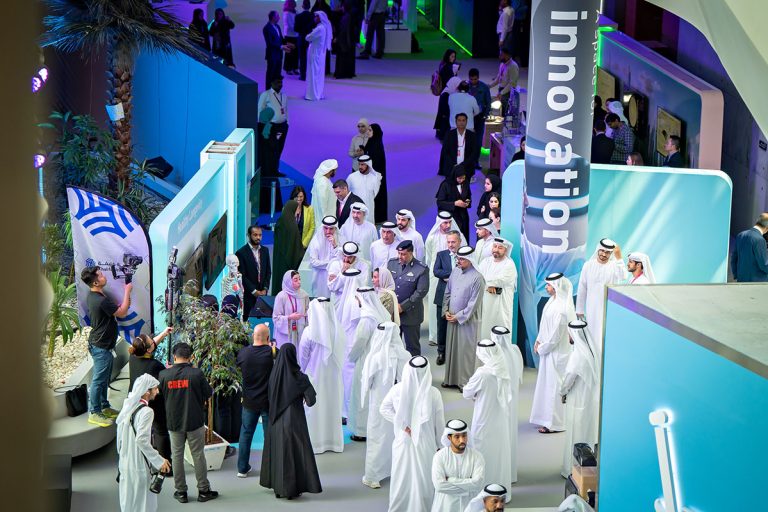Forecasting air quality for cleaner skies across the United Arab Emirates
How Khalifa University is monitoring air quality across the country to mitigate climate change.
Air pollution is a global problem, and when air quality drops to unhealthy levels, it affects both the environment and human health. Emitted mainly from the combustion of fossil fuels, nitrogen dioxide (NO2) is one of the main air pollutants and contributes to the formation of ground-level ozone, smog and acid rain.
At Khalifa University’s Department of Electrical Engineering and Computer Science, Zeyar Aung, and PhD candidate, Aishah Al Yammahi have worked on mathematical models that analyse NO2 data to uncover patterns and forecast future air pollution levels in the Emirates. Their published results and current research projects are addressing United Nations’ Sustainable Development Goals, shaping our understanding of environmental dynamics, and paving the way for pollution mitigation strategies. KU Explorer takes a deeper look at their studies and future research.

Extracting meaningful patterns from weather stations across the country
In a recent study, Aung and Al Yammahi analysed NO2 data from 14 weather stations, located in Abu Dhabi city, Al Dhafra, Al Ain and rural areas of the United Arab Emirates. The data spanned a two-year period, from 2019 to 2020, and was made available by the Environment Agency Abu Dhabi (EAD).
Publishing their findings in Scientific Reports, Aung and Al Yammahi’s results showed the effect of seasons and human activities to the concentration level of NO2. The two researchers used a mathematical tool, known as wavelet transform, to identify periodic patterns present in the data. Similar to a magnifying glass that can zoom in or out on the data, the models allowed researchers to see both the big picture and the fine details. They could reveal both geographic and seasonal differences, as well as the effect of COVID-19 lockdown in April-July 2020, when schools and universities were closed and employees were predominantly working from home.
For example, NO2 was more highly concentrated during the winter season, probably due to decreased sunlight and lower temperatures, between December 2019 and February 2020. The highest NO2 levels were detected in downtown Abu Dhabi, while desert and urban areas showed the lowest concentrations.
The lockdown had a positive effect on air pollution in Emirati cities. Stations in the urban areas of Abu Dhabi city, Al Dhafra and Al Ain showed a reduction in NO2 during the lockdown. On the other hand, NO2 concentrations in the desert areas of Liwa and Al Quaa were unaffected.
The study showed that the level of NO2 varied in a repeating pattern or cycle and lasted from a few days up to 16 days in most regions. An exception was the area of Al Mafraq in Abu Dhabi where the pre-pandemic periodicity of NO2 was much longer, between 64 to 128 days. The exact reason for this pattern may depend on various factors that affect the release and dispersion of NO2 in the air, such as atmospheric conditions, seasonal changes and human activities. By studying the periodicity of pollutants, scientists can gain insights into their behaviour, understand their sources and impacts, and advise strategies for pollution control and mitigation.
“The results give us a better understanding of the seasonality and periodicity of NO2 across the urban and rural areas in the UAE. This study along with similar studies on greenhouse gases conducted at Khalifa University and other research institutions provide valuable results to inform policy makers,” says Aung, who works for the Department of Electrical Engineering and Computer Science.
“We focused on NO2 as a case study. However, the same methods and types of analysis could be applied to other types of air polluting gases,” explains Al Yammahi.
Forecasting air pollution with statistics and machine learning
Beyond analysing NO2 data from the past, Aung and Al Yammahi have also applied two statistical models and two machine learning models to forecast future NO2 concentration levels. They trained the models with the data from January 2019 to November 2020, and then used the trained models to predict the NO2 concentration values for December 2020. Finally, the researchers compared the predicted data with the measurements from the weather station to determine the most effective forecasting methods.
There are two basic modes of forecasting: open-loop and closed-loop. In the open loop, 700 days (1 January 2019 to 30 November 2020) were used to train the models and predict the NO2 levels for the following day (1 December 2020). Subsequently, the actual data from 701 days (1 January 2019 to 1 December 2020) were used to train and forecast for the following day (2 December 2020).
On the other hand, closed-loop forecasting utilises the data from 700 days to make predictions ranging from 1 day to 31 days ahead. Typically, the closed-loop architecture is faster but less accurate compared to the open-loop architecture. In this study, published in the journal Heliyon, the machine learning models and the open-loop method demonstrated better accuracy, closely predicting the NO2 values.
“We achieved accuracies ranging from very good to acceptable in all the 14 locations included in our study,” adds Al Yammahi.
A glimpse at the future – monitoring air pollution from the sand to the sky
Beyond the data on air pollution coming from weather stations, the team is keen on analysing the concentration of NO2 present in its natural trappers, such as sand. Sand acts as a sink, where pollutants can accumulate over time. “Environmental samples can reveal the historical concentration levels of NO2 and other pollutants, whereas the ground stations typically measure atmospheric NO2 level at a particular time point,” explains Aung.
Furthermore, satellite-based instruments offer another way to monitor NO2 concentrations over large areas, including remote or inaccessible regions. For example, the European Space Agency (ESA) launched the SENTINEL-5 satellite in 2021. One of the objectives of this satellite is to measure NO2, as well as ozone, sulphur dioxide and other pollutants, based on their unique ways of absorbing and scattering light of visible and non-visible wavelengths.
“We are currently exploring the combination of satellite data from SENTINEL-5 with ground-based measurements and various modelling techniques to assess air quality, monitor pollution sources, and evaluate the effectiveness of pollution control measures,” concludes Aung.
The study of air quality and climate change remains at the forefront of Khalifa University’s strategic priorities. This commitment is evident through the recent signing of a Memorandum of Understanding between the Environment Agency – Abu Dhabi (EAD), Khalifa University, and seven other esteemed universities in the United Arab Emirates. By joining forces, the country is poised to make significant contributions to understanding and mitigating the impact of air pollution and climate change in the region.
Check out the AI-based platform that monitors and predicts UAE’s air quality
Khalifa University of Science and Technology in collaboration with The UAE’s Ministry of Climate Change and Environment (MOCCAE) created an Artificial Intelligence (AI) platform that displays real-time air quality readings based on satellite data. The tool can also predict the UAE’s air quality and the concentration of dust and particulate matters with a diameter of less than 2.5 microns (PM 2.5) for up to three days in advance. It is available on the MOCCAE’s site at https://ai-for-sdgs.academy/case/274
Reference
- Al Yammahi, Aishah, and Zeyar Aung. “A study of nitrogen dioxide (NO2) periodicity over the United Arab Emirates using wavelet analysis.” Scientific Reports 12.1 (2022): 18144. https://www.nature.com/articles/s41598-022-21937-3
- Al Yammahi, Aishah, and Zeyar Aung. “Forecasting the concentration of NO2 using statistical and machine learning methods: A case study in the UAE.” Heliyon 9.2 (2023).




